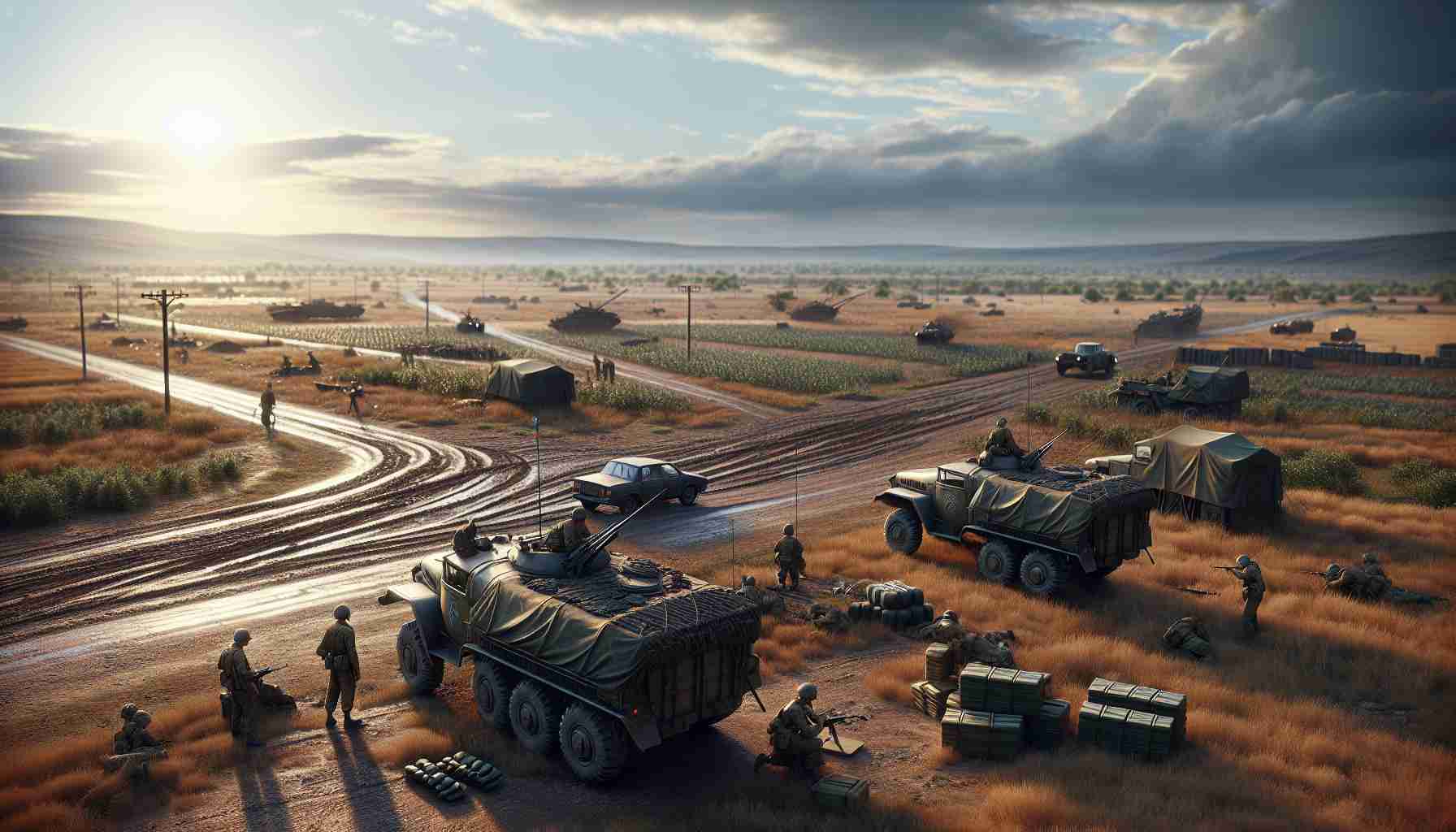The landscape of Syrian villages around the bustling Hmeimim air base is in a state of flux. Russian troops, who have been a fixture here since 2017, are showing signs of pulling back, stirring speculation and strategic meetings between Moscow and Syria’s new government. Russian vehicles, loaded with armored trucks and supply lorries, marked with the distinctive ‘Z,’ appear to be heading towards the Mediterranean Coast.
Moscow’s military presence in Syria has been a financial boon for local communities, but the durability of this arrangement is now in question. Reports suggest ongoing discussions about the future Russian presence and possible consolidation to the coast’s primary bases, including the consequential Hmeimim installation.
Observers note heightened activity at this busy hub, evidenced by the presence of a Russian helicopter gunship patrolling under vast blue skies and the movement of jets and transport planes. The airfield, shared with civilian flights, is vigilant under the watchful eye of HTS fighters, signifying a dynamic, multifaceted military scene.
Along the roads outside Latakia, a grim yet fascinating sight unfolds. Abandoned and destroyed Syrian military hardware stretches for miles—a testament to the fierce engagements that preceded the rebel advances. HTS fighters actively reclaim these derelict machines, often seen maneuvering tanks onto transportation trucks, indicating these vehicles, though initially left behind, are in operable condition.
As troop convoys continue their systematic withdrawal, the future of Russian intervention in Syria remains veiled in uncertainty, with cascading implications for regional stability.
Insights Behind the Russian Withdrawal: Implications for Syria’s Future
Russia’s strategic military repositioning in Syria, particularly around the pivotal Hmeimim air base, marks a significant shift in the geopolitical landscape of the region. As Russian troops appear to be scaling back their presence, several key insights and predictions emerge from the ongoing developments.
Strategic Repositioning and Its Impact
The pullback of Russian forces, first stationed in Syria in 2017, raises questions about the future strategic alignments and influence in the Middle East. Initially, this deployment provided substantial economic benefits to local communities, but the sustainability of this presence is now under scrutiny. Observers note that discussions between Moscow and Damascus could lead to a concentrated regrouping at primary coastal installations, including Hmeimim.
The Operational Dynamics of Hmeimim
The Hmeimim base has evolved into a critical hub of Russian military operations, with heightened activity indicating a complex operational environment. Military jets, helicopters, and transport planes frequently traverse this shared civilian-military aviation space, underscoring the dual nature of operations here. As Russian contingents potentially consolidate along the Mediterranean coast, this base will likely play an even more crucial role in future military strategies.
Recovering Abandoned Military Hardware
Outside Latakia, abandoned Syrian military equipment lines the roads, revealing the intense battles that shaped the current scenario. HTS fighters’ efforts to reclaim and repurpose these machines highlight an ongoing shift in military capabilities and suggest that these assets remain functionally valuable.
Regional Stability and Future Predictions
The implications of Russia’s partial withdrawal for regional stability are profound. Middle Eastern geopolitical alliances could shift as local and international actors re-evaluate their roles and strategies. Analysts suggest that any significant reduction in Russian military assets might embolden rebel factions or alter power balances with potentially unpredictable outcomes for Syria’s delicate political fabric.
Broader Implications for Global Military Strategies
This repositioning could also reflect broader Russian military priorities, potentially reallocating resources to other strategic fronts beyond Syria. Such moves are closely watched globally, influencing military strategies and diplomatic engagements among key global powers.
For further insights into regional strategies, visit the official Russian Ministry of Defence’s website at Russian Ministry of Defence.







